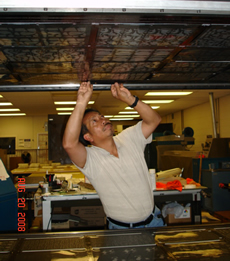

Where do sparkling stamps come from? California Clear Stamp was founded in 2006 for the purpose of producing high quality photopolymer products. The founders have all had extensive experience in the flexographic printing plate or hand stamp manufacturing business. When an existing photopolymer printing plate manufacturing facility became available, they felt it provided a perfect operation to produce clear stamps for the hobby and scrapbooking markets. The facility contained a modern large format processing line that was modified into a high volume polymerization process producing “sparkling” clear stamps. Using advanced resins and manufacturing techniques, the “sparkling” clear stamp was developed. It offers outstanding ink transfer characteristics, resists yellowing, and has improved tensile strength for tear resistance. Genuine photopolymer hand stamps, unlike silicon or vinyl stamps, owe their outstanding ink transfer characteristics to their heritage of development in the flexograhic printing plate industry. The photopolymer resins were originally developed in the printing industry as a replacement for the hand engraved or molded rubber-printing plates being used. Their manufacturing process and ink transfer characteristics were improved until they became the preferred printing plate, replacing rubber, for most flexographic printing processes worldwide. Now, after 50 years of development, the modern resins (offering outstanding ink transfer and ease of use for the art stamp hobbyist) have become a recognized alternative to rubber in hand stamping. Clear stamps are now produced in photopolymer, silicon, and vinyl materials. However, only photopolymer has the microscopic porosity, developed for the printing industry, necessary for excellent ink transfer. The silicon and vinyl materials have a non-porous, slick surface, which has difficulty in even ink transfer. Insist on genuine photopolymer for the ultimate in clear stamps.
Packaging
Postexposure Station
Reclaim looking thru Exposure Station |
Manufacturing
Placing Negatives
Final Rinse
Final Trimming
Inspection
Washout Station |

